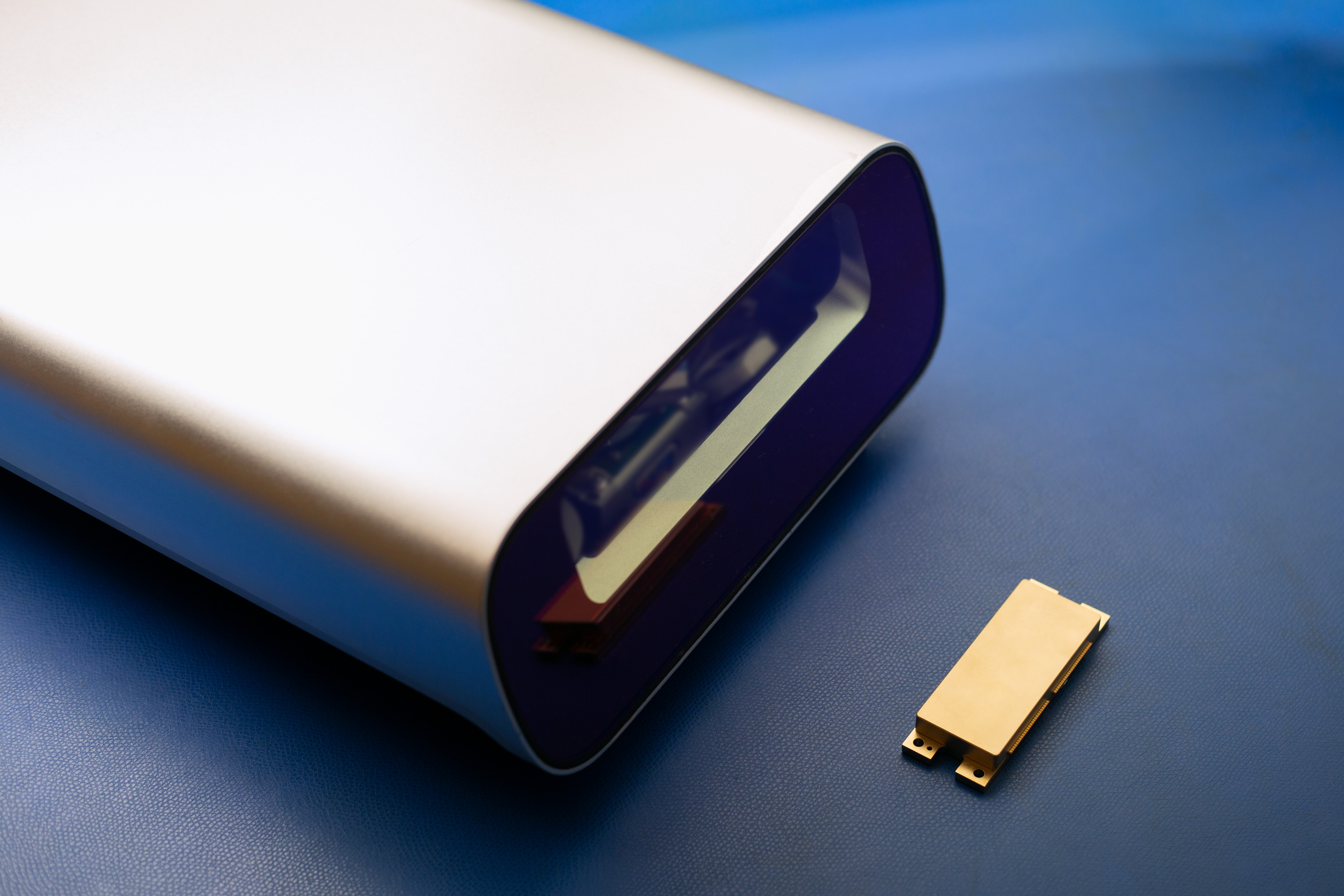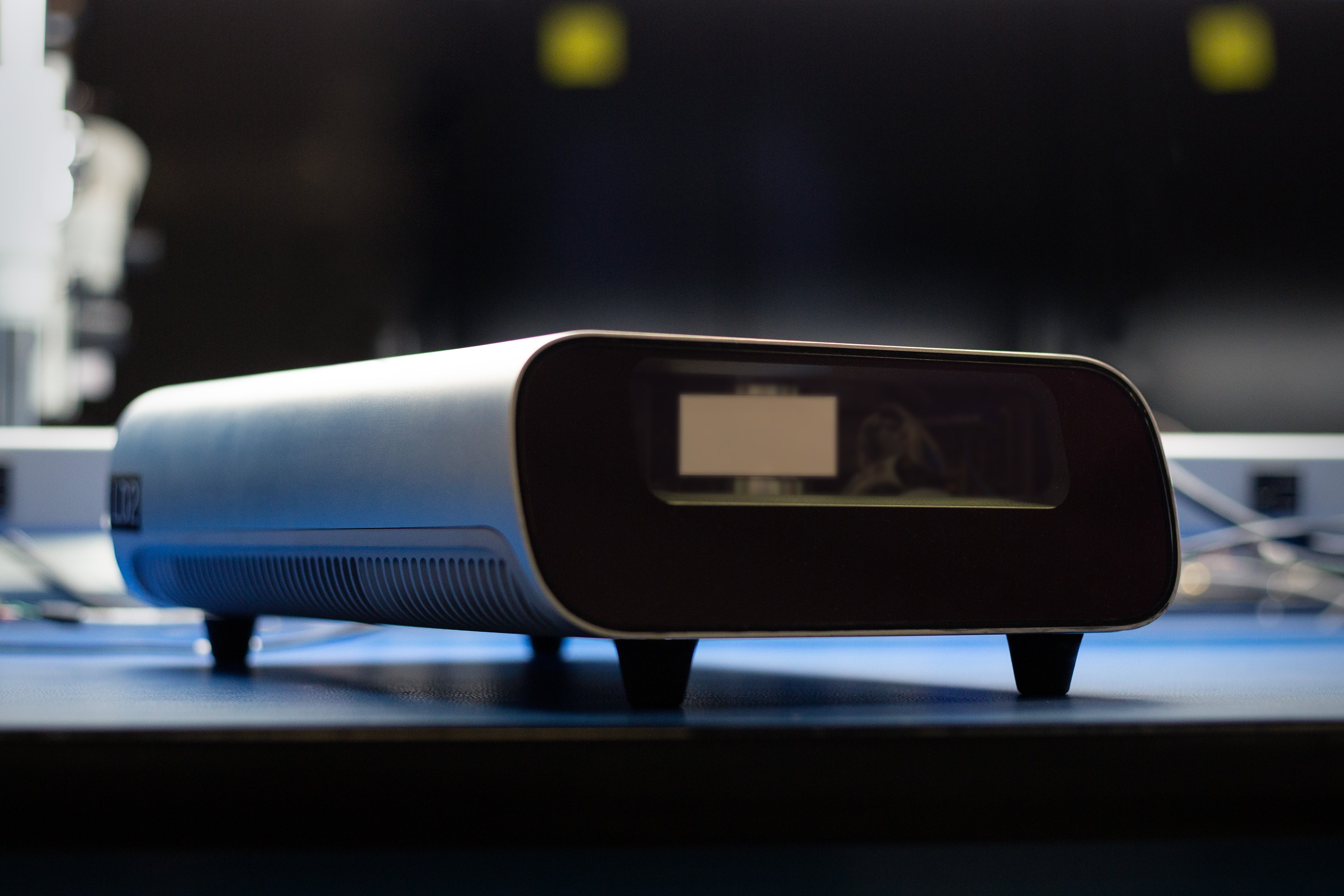FirstLight Lidar—On a chip
Engineering | Progress | July 19, 2023 | 3 min. read

Advancing lidar development with integrated photonics to safely deploy autonomous vehicles
To accelerate the development of our custom long-range lidar solution and unlock this technology for scale, Aurora has built a team of leading experts in lidar and integrated photonics.
Zeb Barber is Senior Director of Lidar Research & Development at Aurora and was previously VP of R&D at Blackmore, which was acquired by Aurora in 2019. Sen Lin is Aurora’s Director of Integrated Photonics and was previously a co-founder of OURS Technology, which was acquired by Aurora in 2021.
The way in which Zeb and Sen’s two teams have come together to deliver a cutting-edge lidar solution is emblematic of Aurora’s engineering rigor and culture of innovation.
The power of FMCW: A quick refresher on Aurora’s approach to lidar
At Aurora, we’ve long asserted that long-range Frequency Modulated Continuous Wave (FMCW) lidar is critical to unlocking safe, driverless operations at highway speeds.
Traditional Amplitude Modulation (AM) lidar, which is used for short distance sensing in both driver assistance and self-driving systems, works by emitting brief pulses of laser light at a fixed frequency. This approach makes AM lidar susceptible to interference from other sources of light, like other lidars or the sun, effectively limiting its range to a couple hundred meters. FMCW lidar, on the other hand, sends out a constant stream (“continuous wave”) of laser light that changes frequency at regular intervals (“frequency modulated”).
Compared to AM lidar, FMCW lidar has a number of crucial advantages:
- Greater range: FMCW lidar sensors are single-photon-sensitive, meaning they can detect extremely small amounts of light. With this level of sensitivity, FMCW lidar can detect objects over 400 meters away, giving the Aurora Driver more time to react to unexpected obstacles.
- Instant velocity data: Using the Doppler Effect, FMCW lidar can instantaneously provide the velocity of each data point it detects, allowing the Aurora Driver to quickly identify whether an object is of interest and plan accordingly.
- Interference free: An FMCW lidar sensor only detects and responds to light that matches the timing, frequency, and wavelength it emits, disregarding the rest as noise.
 Conventional lidar (left) demonstrating a range of 200m. FirstLight Lidar (right) demonstrating a range beyond 400m.
Conventional lidar (left) demonstrating a range of 200m. FirstLight Lidar (right) demonstrating a range beyond 400m.
Investing in lidar development
Early on, product leaders at Aurora knew FMCW lidar would be a key differentiator for the Aurora Driver—a first-of-its-kind autonomy system designed to power both commercial trucks and passenger vehicles. At the time, the necessary FMCW sensors weren’t available off-the-shelf, so the team looked elsewhere, specifically at cutting-edge startups developing lidar technology.
In 2019, Blackmore joined the Aurora team. With Blackmore’s expertise in FMCW architecture and digital signal processing, Aurora launched the first generation of FirstLight Lidar and unlocked the safe training and testing of Aurora Driver-powered trucks on public highways.
 Aurora’s proprietary FirstLight Lidar detects objects more than 400m away.
Aurora’s proprietary FirstLight Lidar detects objects more than 400m away.
FMCW provides powerful range and exacting precision, but to manufacture it at scale, we needed a cutting-edge solution that would condense complex optical components into a mass-producible unit. In search of scalability, Aurora turned to integrated photonics and in 2021, the OURS team joined Aurora, bringing their expertise and IP in silicon photonics, integrated photonics, and photonics packaging.
With Blackmore and OURS working as one lidar development team at Aurora, we quickly identified a way to transform some of FirstLight Lidar’s bulkier optical components, like fiber optic cables, lasers, and transceivers, into component-level devices like semiconductor chips.
Today, we’re excited to share that we’ve integrated FirstLight’s discrete optical components into a series of semiconductor chips. For the first time, we’ve demonstrated the functionality of each chip component and have confidence that these chips will come together in an end-to-end system that delivers a range and functionality more powerful than our current generation of FirstLight Lidar. By harnessing the power and innovation of integrated photonics, we’ve charted a viable path toward an increasingly scalable generation of FirstLight Lidar.
Manufacturing at scale
Much like the computer chip led to the proliferation of personal computers, the same applies to the manufacturing of lidar technology at commercial scale. Our lidar-on-a-chip solution makes FirstLight Lidar more compact and reliable, faster and easier to build, and more affordable to produce. Using this technology, we will be able to dramatically reduce the cost of FirstLight Lidar, enabling us to scale to large volumes.
What’s next? By the end of 2023, we expect to have developed a complete end-to-end prototype of our FirstLight Lidar-on-a-chip solution that meets the performance target of our next-generation sensor suite. We expect to equip our fleet of trucks with FirstLight Lidar-on-a-chip units in 2027, as part of our plans to expand our product offering and scale our fleet of self-driving trucks.
At Aurora, we make bold strategic bets that allow us to deliver on our vision of a future with autonomous vehicles. The story of how Blackmore and OURS, two leading teams in lidar development, came together to unlock a world-class lidar system for scale is just one of the ways we’re driving the industry forward.
Zeb Barber is Senior Director of Lidar Research & Development at Aurora and former VP of R&D at Blackmore
Sen Lin is Director of Integrated Photonics at Aurora and former co-founder of OURS